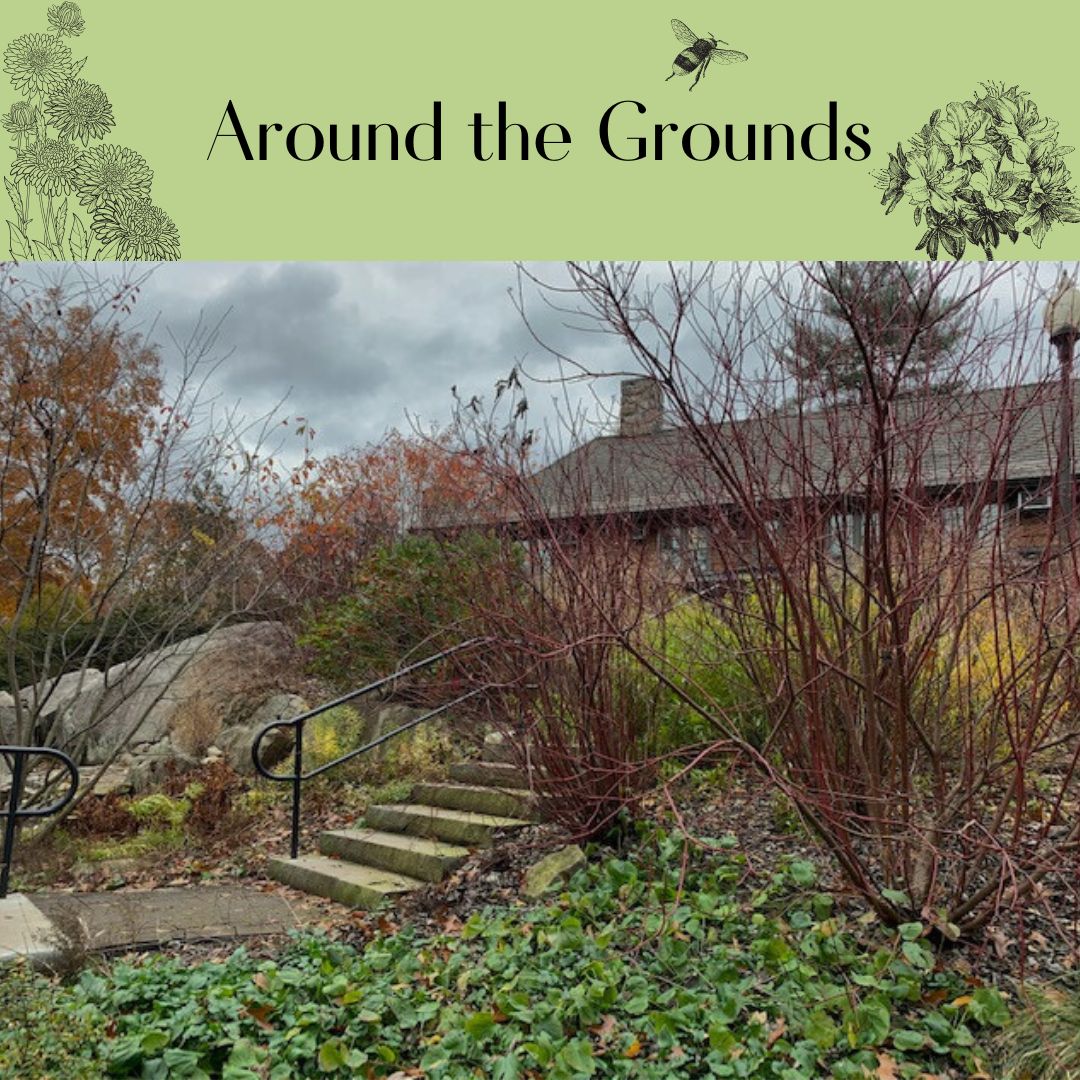On a cold gray winter day, when the leaves are gone and the last flower is just a memory, finding some bright color in the landscape is a blessing. Discovering “winter interest” in a great native shrub that also provides food and shelter for birds and pollinators is a win-win.
In our last two blog posts, we suggested Winterberry and American Holly with their bright berries to perk up winter views. Here is another of our winter favorites:
Cornus sericea, commonly called Red Osier Dogwood or Red Twig Dogwood, is a great native shrub that should find a place in the landscape just for its brilliant red bark in winter. But it’s also beautiful the rest of the year – a true four-season plant. In mid-spring, it blooms with flat sprays of fragrant white flowers. All summer, it forms a rounded shape topping out at 6 to 8 feet tall and wide.
In late summer, pretty white berries form to feed the birds. In fall, the leaves turn varying shades of red and purple and begin to drop from the lower branches first, revealing the characteristic red bark. As the shrub matures, you can cut back the older woody stems in spring to encourage new sprouts to come up in vibrant red for the winter show.
Red Osier Dogwood has a wide native range in the United States. It grows on river banks and in wet areas throughout the northern part of the country. It’s a great choice for rain gardens or any sunny area where water collects, especially if you want a low-maintenance natural thicket. Red Osier Dogwood will send out suckers, or shoots, that will root themselves and form new plants to fill in an area. It is an ideal choice for controlling erosion or steep banks in areas that tend to flood. But it will also grow in average garden soil and can easily be controlled by cutting off suckers as they appear.
And you couldn’t find a better bird habitat! Red Osier Dogwood provides nesting sites, berries for food, and a supply of caterpillars for baby birds. Like other dogwood species, it is a host plant for the beautiful little Spring Azure butterfly.
So, all these features are dividends for nature while we enjoy the winter interest in our landscape. That’s a pretty good investment!
This blog is authored weekly by Cathy Ludden, local expert and advocate for native plants; and Board Member, Greenburgh Nature Center. Follow Cathy on Instagram for more photos and gardening tips @cathyludden.

